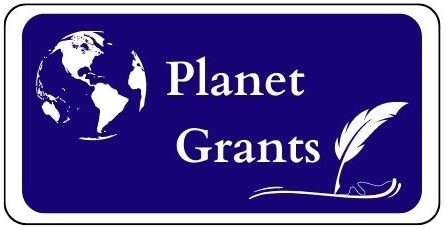
Capacity is the maximum amount something can contain, or in nonprofit terms, your organization’s ability to implement programs and projects. This can mean staff on hand, available budget, and the skills or capabilities of the people on your team. Funders want to know how their investment in your capacity-building will enhance your organization’s operations.
Capacity grants and Planning grants provide funds to bolster the inner workings of organizations and help lay the groundwork for launching successful programs or projects. Capacity grants focus on building an organization’s infrastructure (hiring or training new staff and volunteers, for example). Planning grants support the development of a new project or program by funding planning and research needs such as feasibility studies, market research, community needs assessments, and more.
Capacity and Planning grants can be used for a variety of purposes, including:
- Conducting strategic planning
- Developing leadership skills
- Conducting a needs assessment
- Improving board structure
- Providing professional development for staff
- Investing in technology
- Formal studies
- Internal communications
- Disaster relief for long-term recovery efforts
- Data analysis / coordination
- Hiring a business admin
- Major capital campaign and geographical expansion
Capacity grants are not intended to be used for expanding services, adding new programs, renovating buildings, or other activities that would not strengthen the organization’s capacity to serve. Capacity-building grants are available through a variety of public and private funding sources.
The most common capacity or planning grants are for education, healthcare, community services, and local infrastructure.
A Sampling: Capacity and Planning Grants Funding Areas
Environmental Planning Grants:
There are pollution reduction, climate change, and environmental planning grants from the EPA, NOAA, state and federal fish and wildlife agencies etc. that help organizations, cities, and states plan new projects.
– USDA Grants:
Department of Natural Resources (Agriculture):
Environmental Quality Incentives Program: Technical service providers offer planning, design, and implementation services to agricultural producers on behalf of NRCS.
Conservation Innovation Grants: Conservation Innovation Grants (CIG) is a competitive program that supports the development of new tools, approaches, practices, and technologies.
Water and Waste Sanitation Planning Grants: USDA Rural Development: USDA Rural Development offers funding for technical assistance in upgrading water infrastructure.
– NOAA, National Oceanic and Atmospheric Administration:
Offers Coastal Resilience and other planning grants for environmental education K-12 projects, fisheries management, marine debris removal culvert projects, conservation projects, and coastal resilience efforts.
Education
– NSF: The National Science Foundation:
Offers planning and capacity grants to support research infrastructure and increase participation in STEM fields. These grants can help build capacity for partnerships, prepare proposals, and establish large-scale networks.
They include but are not limited to the EMBRACE, ERC, Capacity, REM, and EFRI programs.
https://new.nsf.gov/eng/efma/emerging-frontiers-research-innovation
– NSF Planning Grants for Research Centers
Support the development of center-scale scientific research. These grants can help teams form partnerships to address national challenges.
– NSF Capacity Grants
Infrastructure Capacity for Biological Research grants can help build capacity in cyberinfrastructure, biological collections, and biological field stations.
Healthcare
NIH Grants–
– The NIH Planning Grant Program (R34) provides support for the initial development of a clinical trial or research project.
– Clinical Research Study Planning Grant Program: https://grants.nih.gov/grants/guide/pa-files/PAR-25-358.html
Community Service Grants
Community Service grants allow for capacity building at the local level. Community services include healthcare access, mental health services, outdoor access, youth programs, senior services, and even art programs.
– Emergency Planning Grants: FEMA
Preparedness Grants: Preparedness grants support our citizens and first responders to ensure we work together as a nation to build, sustain and improve our capability to prepare for, protect against, respond to, recover from and mitigate terrorism and other high-consequence disasters and emergencies.
Finding Capacity Grants
Private, corporate, and community foundations, as well as city, county, state, and federal governments, offer capacity and planning grants for a variety of needs.

Instrumentl is a great source for locating grants. Check out their blog, which shows how to use their platform and where to find capacity grants.
The Grantsmanship Center is also a good resource to learn about capacity grants.
“Even though capacity-building grants are about internal organizational systems, be sure to help the funder understand how the project will eventually help your organization’s beneficiaries. The only reason your organization and its systems matter is because of the work you do for others. Keeping that idea in the forefront is important in any proposal.”
Federal Grant Searches:
If you use grants.gov or research.gov for federal grants, you can also use a targeted Google search to find these opportunities faster.
Pro Tip: Some grant opportunities posted at the end of the year are for the following award year. Be sure to include the current year at the end of your search terms to avoid weeding through previous years’ proposals. Example: google ‘healthcare NIH planning grants 2025’ or your specific keyword, you will find opportunities.
Private Funder Grants
These often provide funding for professional development, education funding to provide for expanding classroom programs or after-school nonprofits.
Plenty of private funders offer capacity-building and training grants, especially in workforce development niches. Others are termed youth leadership/ mentorship grants for youth service niches.
Beyond Grants – How to be Successful at Building Your Organization’s Capacity
NETWORK! 🙂
- Search on Instrumentl, Candid/Foundation Directory Online, GrantStation, and Grants.gov, etc., to find funders that give to your organization’s niche.
- Ensure that their giving priorities match by using NTEE codes, keywords, and geographic focus.
- You can also search funders’ tax filings to see which organizations they’ve funded in the past. Use tools like Candid’s 990 Finder or ProPublica’s Nonprofit Explorer.
- Reach out to potential funders for meetings and coffee dates when grants are NOT OPEN! They are more likely to respond during inactive funding times. Be clear about what your organization needs funding for and how it will affect the populations you serve.
- Get donors involved and diversify your funding portfolio. Don’t put all your eggs in one grant for your project.
- Build your organizational capacity by using nonprofit resources like Catchafire to find professional volunteers to help you reach your goals, or get more training from resources such as NonProfitReady to get free professional development courses such as emergency preparation and board development.
Get “Grant Ready”
Do You Have the Basic Elements for a Grant Application?
- History, Background, and understanding of those you serve
- Project Timeline: Highlights major activities, milestones, and deadlines. This should include realistic SMART goals and demonstrate how it will improve your organization
- Budget: Clear & detailed outlining costs associated with each aspect. Every activity should have a cost outlined and a clear reason that shows why it is needed.
- Evaluation: Explain how you will measure success with specific and attainable metrics to show the grant impact & methods used.
- Partnerships: Grow your community of resources with other capable organizations. Engage with successful key stakeholders & partners. Clearly outline specific program/project roles, partner responsibilities, and what stakeholders will be involved or benefit from the grant.
In Conclusion
To recap, capacity and planning grants will help create a strong foundation to deliver a service or project.
Capacity grants are funds that nonprofits, cities, tribes, eligible organizations, and state agencies can utilize to develop skills, strategies, systems, and overall structures to help the organization grow and increase effectiveness.
Use capacity and planning grants to develop a strategic plan, hire people, or conduct research that demonstrates the need for your project/program.
Be sure to clearly demonstrate how a capacity-building investment will enhance your organizationʼs operations for a more sustainable funding future.
